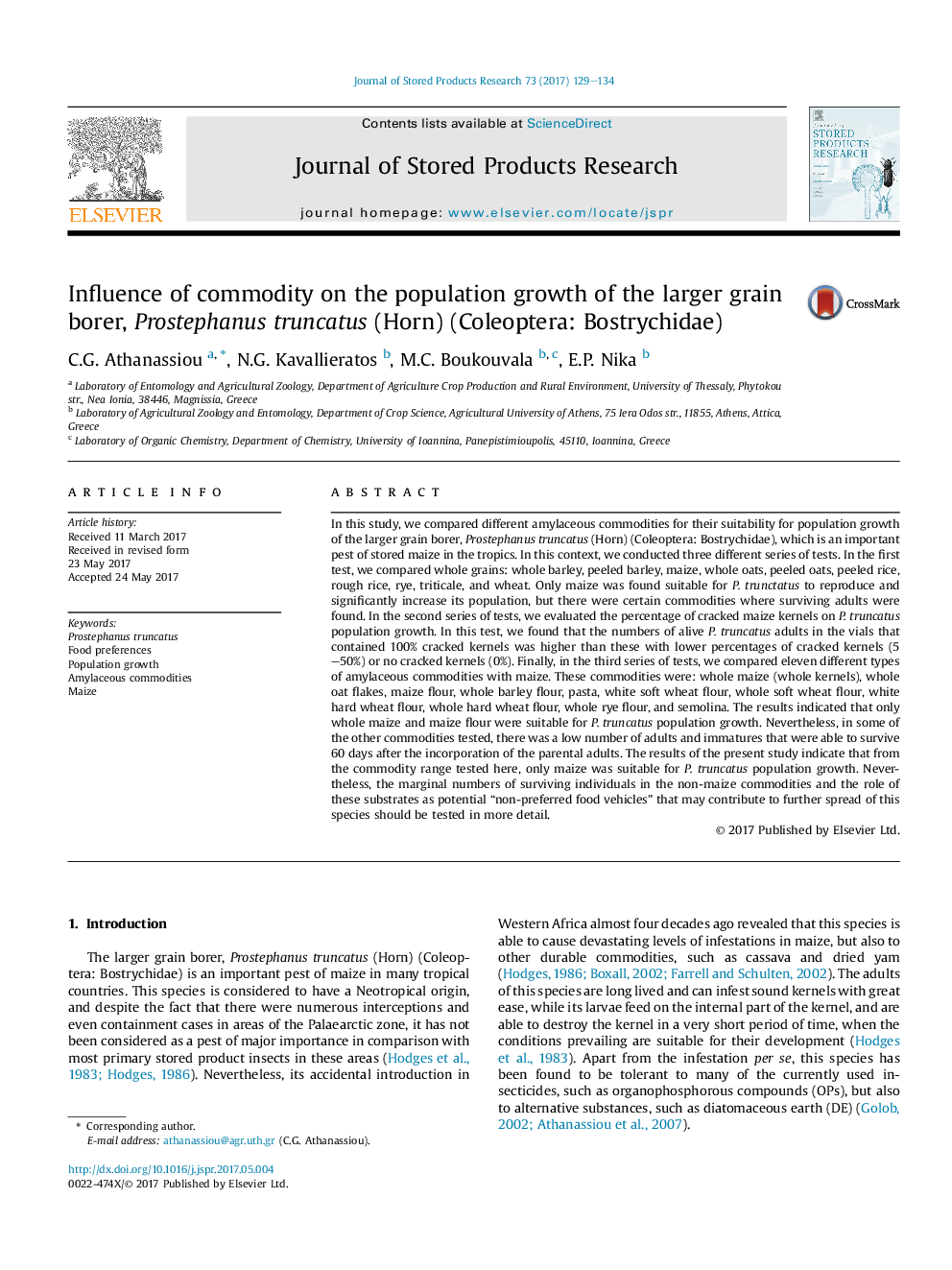| کد مقاله | کد نشریه | سال انتشار | مقاله انگلیسی | نسخه تمام متن |
|---|---|---|---|---|
| 5762521 | 1624916 | 2017 | 6 صفحه PDF | دانلود رایگان |
عنوان انگلیسی مقاله ISI
Influence of commodity on the population growth of the larger grain borer, Prostephanus truncatus (Horn) (Coleoptera: Bostrychidae)
دانلود مقاله + سفارش ترجمه
دانلود مقاله ISI انگلیسی
رایگان برای ایرانیان
کلمات کلیدی
موضوعات مرتبط
علوم زیستی و بیوفناوری
علوم کشاورزی و بیولوژیک
علوم زراعت و اصلاح نباتات
پیش نمایش صفحه اول مقاله

چکیده انگلیسی
In this study, we compared different amylaceous commodities for their suitability for population growth of the larger grain borer, Prostephanus truncatus (Horn) (Coleoptera: Bostrychidae), which is an important pest of stored maize in the tropics. In this context, we conducted three different series of tests. In the first test, we compared whole grains: whole barley, peeled barley, maize, whole oats, peeled oats, peeled rice, rough rice, rye, triticale, and wheat. Only maize was found suitable for P. trunctatus to reproduce and significantly increase its population, but there were certain commodities where surviving adults were found. In the second series of tests, we evaluated the percentage of cracked maize kernels on P. truncatus population growth. In this test, we found that the numbers of alive P. truncatus adults in the vials that contained 100% cracked kernels was higher than these with lower percentages of cracked kernels (5-50%) or no cracked kernels (0%). Finally, in the third series of tests, we compared eleven different types of amylaceous commodities with maize. These commodities were: whole maize (whole kernels), whole oat flakes, maize flour, whole barley flour, pasta, white soft wheat flour, whole soft wheat flour, white hard wheat flour, whole hard wheat flour, whole rye flour, and semolina. The results indicated that only whole maize and maize flour were suitable for P. truncatus population growth. Nevertheless, in some of the other commodities tested, there was a low number of adults and immatures that were able to survive 60 days after the incorporation of the parental adults. The results of the present study indicate that from the commodity range tested here, only maize was suitable for P. truncatus population growth. Nevertheless, the marginal numbers of surviving individuals in the non-maize commodities and the role of these substrates as potential “non-preferred food vehicles” that may contribute to further spread of this species should be tested in more detail.
ناشر
Database: Elsevier - ScienceDirect (ساینس دایرکت)
Journal: Journal of Stored Products Research - Volume 73, September 2017, Pages 129-134
Journal: Journal of Stored Products Research - Volume 73, September 2017, Pages 129-134
نویسندگان
C.G. Athanassiou, N.G. Kavallieratos, M.C. Boukouvala, E.P. Nika,